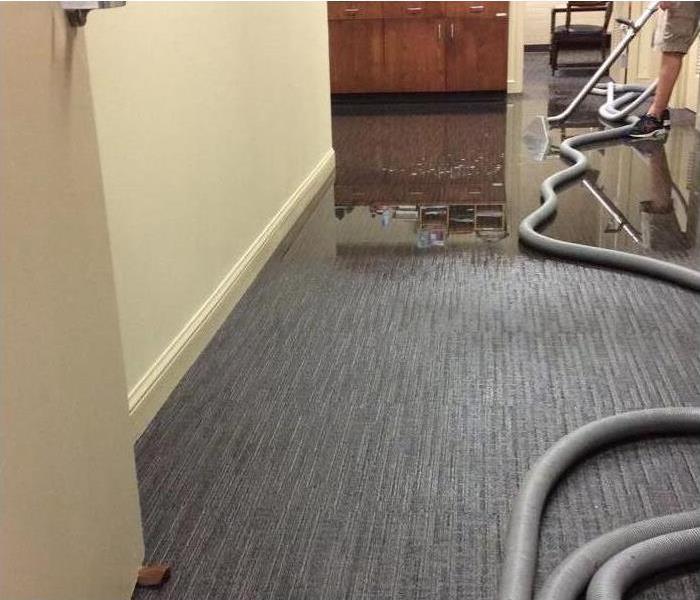How Can You Prepare for Flood Damage?
2/23/2022 (Permalink)
 If you are having flooding issues and suspect storm or water damage, give SERVPRO a call on our 24-hour service line.
If you are having flooding issues and suspect storm or water damage, give SERVPRO a call on our 24-hour service line.
What Can You Do To Prevent Flood Damage?
Mother Nature is unpredictable, but even when you can’t prevent or predict flooding, you can still be prepared. Flood damage and storm damage can cause costly and catastrophic losses that many commercial businesses struggle to recover from. With appropriate preparations, you can minimize loss of property, inventory, and livelihood.
1. The First and Best Preparation Is Prevention
If you’re selecting your first commercial location, one of the best things you can do is choose a site that’s both advantageous to your business needs and positioned strategically in a low-flood zone. Historical flood data in Gardere, LA, can tell you which areas are less likely to deal with flooding and runoff.
If you’re already established, though, you can still mitigate damage by ensuring your property is water-tight. Check weather stripping and sealing, and where applicable, use waterproof coatings and paint.
2. Stock Up on Sandbags
When you know bad weather is coming, it helps to have sandbags on hand. Sandbag your doors and windows to create a watertight seal and prevent windows from breaking inward. You can also sandbag your walls if you have enough, particularly if you’re worried about water damage or about walls breaking inward under heavy flooding.
3. Seek High Ground
If you have the ability to move inventory, furniture, and office equipment to a higher floor in the event of a flood, take advantage to keep your investment safe. Migrate anything that isn’t fixed in place. Organize and label everything neatly as needed; you may also need to create a labeled floor diagram to replace things after.
4. Check for Leaks
Although sandbagging will help prevent some water intrusion, check your entire property for leaks. This includes checking your ceiling. Sandbags can’t prevent roof leaks, which can cause major storm damage and make the work of restoration specialists even more difficult. One good way to test if areas are watertight is to check if they’re airtight. You may notice drafts already, but you can also use a can of air to check any seams or jointed areas.



 24/7 Emergency Service
24/7 Emergency Service